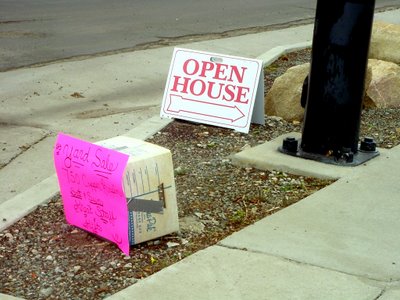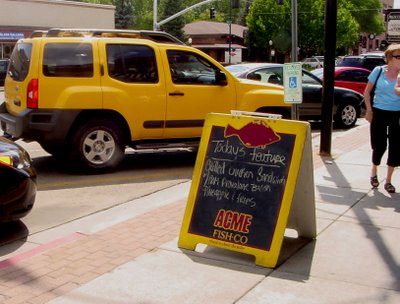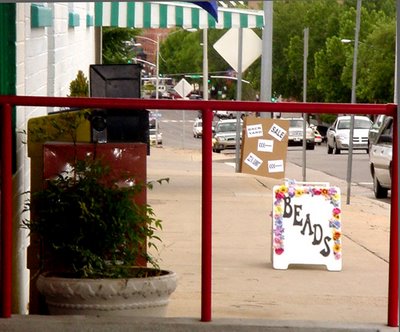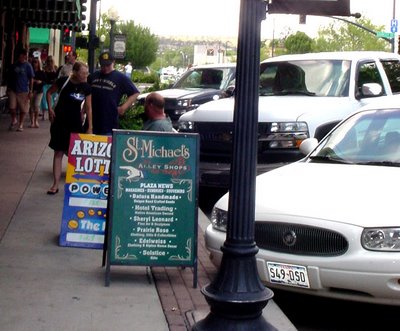The city is like a living being that is born, grows, matures, decays and can revive. The elements of the city, "the people, streets, parks, neighborhoods, the government, the economy," cannot exist without one another and are, like the organs of the human body, connected with each other.
In this evolutionary approach streets play an important role: they are the lifeblood where urban dwellers meet each other and where trade and commercial activities take place. The street is the scene a "sidewalk ballet," according to Jacobs, which determines the security, social cohesion and economic development of cities. From this perspective, even taking out the garbage or having a talk with a passer-by is a deed of dramatic expression. These every day acts make a city into a vital city.

Frankly, she wouldn't have had any truck with city officials who get uptight about signs hung on light poles, looking for lost cats & dogs or announcing the discovery of same. Or promoting a rock concert. Or a civic meeting. Or a book. Whatever.

I love these signs. I read them. I wonder if the cat was ever found. I am tempted to visit the yard sale or the open house. Buy the book. The signs announce that Things Are Happening in the neighborhood, that it isn't dead yet.

Similarly, street signs in front of businesses (usually on tourist weekends only) give you a taste of what you might find inside -- without having to make a commitment.
(Sometimes they even match the yellow SUV parked in front! I'm having a great run of colorful vehicles, as you may have noticed.)


I certainly agree that signs on the streets are neither tidy nor orderly. That's the point, according to Jacobs, who says you can't plan a wonderful street-scape, but must let it grow. Let's face it -- we're damned lucky here in Prescott to have a downtown -- though we have to thank the tourists and merchants, not the developers.
(I suspect she would have questioned the wisdom of banning smoking in bars in a tourist town, by the way. I wonder if those local folk who voted for the ban were secret tidiers voting to destroy downtown -- they certainly aren't out in their numbers to patronize Whiskey Row saloons. Anybody out there got current numbers?)

Yes, things tend to be a little messy in a proper city. But then uptight tidy and orderly is for cemeteries.
Note: the comments about Jane Jacobs were from an article by Gert-Jan Hospers at the Preservenet site.





3 comments:
Re: the smoking ban.
Here in Upstate New York the smoking ban greatly upset a great number of bar patrons. Many chose to remain home and smoke in peace. Other smokers have formed alliances with like-minded fellow nicotine lovers, making new friends. The nonsmokers have replaced the smokers, creating a changed sort of bar atmosphere. Some owners are all for it; Others say they have lost business. Looks like a wash to me.
Even though I am a nonsmoker, tobacco bans in drinking establishments just seem stupid. No one is there for their health.
In regards to lively streets (sorry for I only came across this blog tonight)I appreciate the reference to "Life and Death of the American City", but does not the context of that piece seem slightly irrelevant? Alas, what we consider urban and rural has changed. American cities have progressively migrated from a dense urban core to a cottage home for more than a century. I think what you may be getting at with this blog is the difference between the folk and the establishment, the organic between the inorganic. However, this sets up quite a black and white dichotomy when the transition of population and desires in the American landscape follow no binary system. Desire and fear is what drives our populace out of cities (to be replaced by young up-and-coming hipsters). I think there is a new vernacular, a new folk for what our landscape will and, maybe, should represent. The proliferation of master planned amenity driven communities is no circumstance merely of the developer, but of the purchaser as well. Creating a perverted neo-vernacular that has found many iterations since the cottage homes propagated by Downing in the 19th century. The exclusion, whether spatial or economic, of the well-to-do is a heritage ingrained within the American landscape. However since such times as The Revolution the access to such imagineered landscapes has grown abundantly. Yes the folk still huddle, only now the allow grouping and designation to fall to the developer, the land broker, and the HOA delegate.
Sorry, in turn, about the delay in response -- I've been out of town for a couple of weeks. I realize that, for many (far too many) Americans, the standardized Mall has replaced the Downtown in far too many locales, which in turn gets rediscovered by the hip younger set and the $$ urban gentrifiers. It's one reason I like Prescott, despite my advanced age -- I HATE malls, I like Downtowns & will even stop for an occasional brew on the Square. I grant that people huddle & that they prefer to do it with like-minded neighbors, hence all the hue & cry about so-called affordable housing. As for what the near-future trends might be, I won't speculate. I recall that at the time of the last energy crunch in the 70s, the pundits talked about less commuting and folk opting for much smaller quarters -- what did we get? SUVs, McMansions gated communities.
Post a Comment